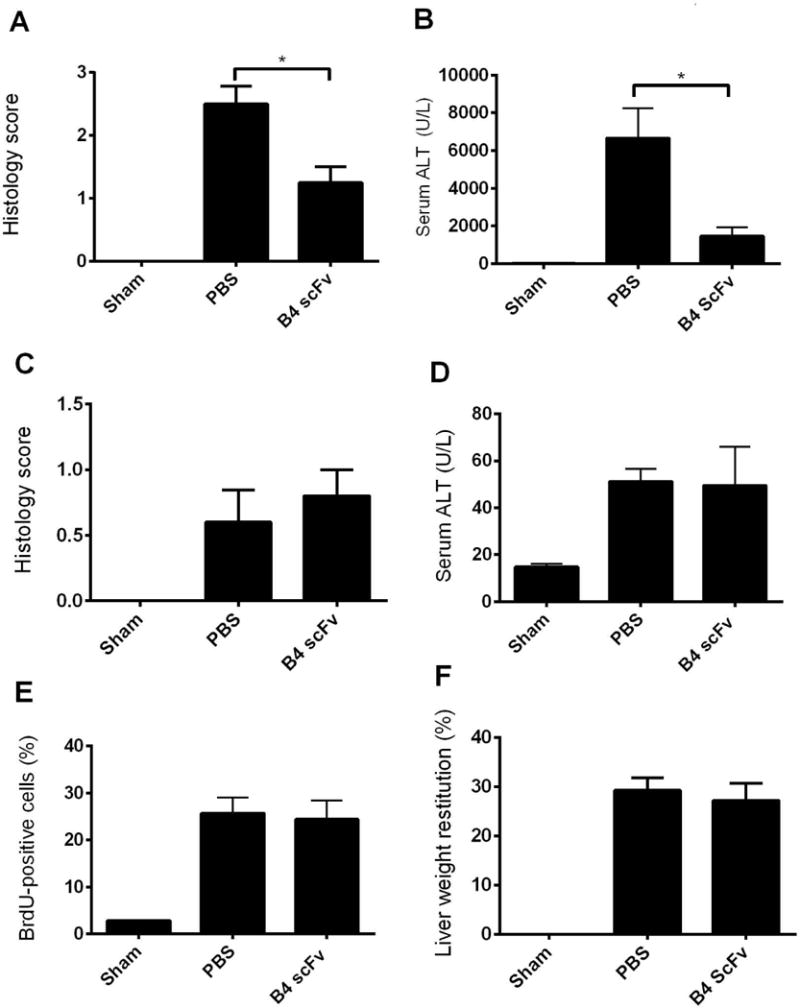Fig. 5.

Treatment with B4 scFv limits injury following hepatic ischemia reperfusion injury and does not alter liver recovery or regeneration following 70% partial hepatectomy in wild type mice. WT mice treated with B4 scFv had decreased hepatic injury compared to PBS treated controls. WT mice underwent 30 minutes of ischemia followed by 6 h of reperfusion. B4 scFv (20 μg) and PBS was administered i.p. 5 minutes prior to reperfusion. Hepatic injury was measured by (A) Histological quantification of necrosis and injury, determined on a scale of 0–4. Representative H&E stained sections are shown in supplementary Figure 4. (B) Serum ALT. Results expressed as mean ± SEM, n=4–6. *p < 0.05. Following 70% PHx, WT mice treated with B4 scFv (20 μg) and PBS control treated mice had similar injury and regeneration outcomes. All measures were made at 48 h post PHx. B4 scFv and PBS were administered i.p. 5 minutes prior to PHx surgery. Following 70% PHx, liver injury was determined by (C) Histological quantification of necrosis and injury, determined on a scale of 0–4. Representative H&E stained sections are shown in supplementary Figure 5. (D) Serum ALT. Liver regeneration was measured by (E) BrdU incorporation, detected immunohistologically and expressed as % positives cell counted in 10 hpf and, (F) percent liver weight restitution. Results expressed as mean ± SEM, n = 4–6. No significant differences between PBS treated and B4 scFv treated mice for all measures.
